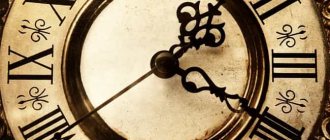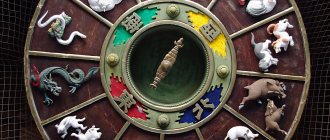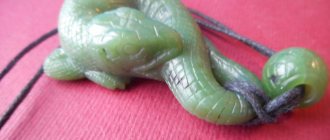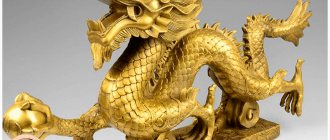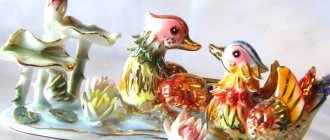The symbol in Feng Shui is of great importance, especially animal talismans. They are used everywhere. The reason for such constancy is easy to explain: they are faithful to the person who cares for them and values their presence. Chinese teaching does not insist on the mandatory presence of animals in the house, only at the request of a person. And not all of them can be kept, due to their size or other features. But a symbol in the form of a photo or figurine is welcome.
Among the variety of animal mascots, the monkey is important. It is a symbol of resourcefulness, luck and wisdom. It also represents talent, adaptability to different conditions, and the ability to remain oneself.
Feng Shui personifies the monkey as an animal that bestows good health and protection in business. Since the animal is capable of imitation, it deftly adapts to any circumstances. This means it can bring help in all sectors. The inhabitants of Egypt believed that this animal, more than others, had the ability to understand humans and their speech. And he learns new skills well too.
A popular symbol in Feng Shui is the three monkeys. Came from Buddhism, promotes the fight against evil, rejection, denial. After all, each of the monkeys openly shows its “position”: the first closes its eyes, the second closes its mouth, the third closes its ears. Thanks to the legend, these three monkeys are a symbol of countering denunciations and gossip with malicious intent. And being companions of the god Vajrayaksha, they are protectors from evil spirits and diseases.
The feng shui figurine of three monkeys has gained popularity not only in eastern countries, but also in western ones. And thanks to this, a song was born, where the chorus contains the following words: “I don’t hear anything, I don’t see anything, I won’t tell anyone anything.” It sounds like a call to have nothing to do with evil, to avoid by all possible means.
Monkey Time
Perhaps we should start by indicating the time when the Monkey rules. All animals of the Chinese calendar govern a time period of two hours. Every day from 15:00 to 17:00 it is Monkey time. Usually during these hours, calm arises or passions heat up to incredible limits. The reason for such extremes is that the strong metal of this demon freezes the space and energy of living beings or activates situations caused by the influence of the energies of fire and wood.
The month ruled by the Monkey is August. According to the Chinese calendar, it is the seventh, and according to the generally accepted calendar it is the eighth. In addition, the animals of the Chinese calendar rule over periods of time that last twelve months. Years of the Monkey: 1944, 1956, 1968, 1980, 1992, 2004, 2021, 2028. If a year is called, for example, the year of the red Monkey, like 2021, then this means that its heavenly trunk represents strong fire, and its earthly branch is strong metal - the main energy of the Monkey.
Need a newsletter? Test the modern delivery service for Viber messages, email and SMS, which stands out for its revolutionary drip automation and flexible tariffs.
The secret to effective planning
The secret of success is that each lesson corresponds to the time period that is optimally suitable for it according to Feng Shui.
Any person periodically faces the fact that some work, which he previously could easily cope with, suddenly stops and does not proceed, no matter how much effort is put in. And the reason is just the wrong time of day for him.
The proverb says: “There is a time for everything.” And indeed it is. There is an ideal time for any kind of activity or work, from eating to magical practices. You just shouldn’t plan risky things during the hour of the Monkey in Feng Shui, but sort things out during the hour of the Horse.
Qualities of the Monkey
All animals of the Chinese calendar are called demons because they are earthly branches or gross energies manifested in the physical world. They bring a lot of negativity into the lives of living beings. Therefore, in ancient times, feng shui masters associated them with demonic forces and creatures. The monkey has the energy of strong metal, which can increase pain, promote damage to the body with metal objects, provoke operations and make situations created by strong fire and wood too active.
At the same time, the Monkey has a strong metal that can cure diseases, strengthen the immune system, calm the psyche, eliminate spontaneous clairaudience, eliminate cancerous tumors, and improve the functioning of the respiratory system. In other words, all animals of the Chinese calendar, except for negative effects, contribute to improving the quality of life. Etheric - the protective layer of humans and animals consists of a strong metal, which is also called Yang metal. Therefore, strengthening this energy usually helps to recover from any ailments that are not associated with an excess of this element in the energy of a living being.
Sacred baboon of the ancient Egyptians
The baboon god Hazur was the keeper of sacred papyri and patronized scribes and educated people. The ancient Egyptian god of wisdom Thoth, who later absorbed the symbolic meanings of Hazur, was often depicted as a wise baboon. For the Egyptians, the baboon was a symbol of secret knowledge. It was believed that this monkey was a scribe to the god Ptah, and also recorded the verdict during the Last Judgment. The symbol of the god Thoth, who was responsible for chronology, is baboons.
Statue of a sacred baboon from the temple of the god Thoth
Ancient Egyptian god Thoth
Monkey Sector
The monkey rules in its own corner of each room, as well as in the space in the compass direction - southwest-3. Its sector is located in the interval 232.5° - 247.5°. Like all animals of the Chinese calendar, she has her influence on people's lives. For example, if the front door or window from which energy comes into the room is placed in the direction of the Monkey, then people living in such an apartment will lead a quiet life if they were not born in the years of the Horse and Tiger and if they do not have pillars the fate of the strong fire and wood. Otherwise, stressful situations will be frequent.
Accessible Feng Shui
Dear friends!
Today I’ll tell you about a wonderful paired feng shui symbol - “monkey on turtle”.
This talisman has, so to speak, a narrow specialization and will be especially useful for careerists. People who do not stop there always see new prospects and goals for themselves.
The elephant, as a symbol of perseverance, wisdom, and prudence, will help such people maintain their “old positions” and not lose their past in the pursuit of something big. In China, even the hieroglyph for elephant - “xiang” - has a second meaning - “prime minister”, and the Chinese consider this coincidence to be very symbolic. And the elephant itself is one of the best symbols of achieving heights in a career.
The monkey is a symbol of originality, cunning and intelligence, perseverance and courage. In China, a monkey means “dafu” - an official of the 2nd rank. Mythology takes us to the story of the king of the monkeys - Sun Wukong. At first he was very hot, unrestrained, and showed himself to be a harsh and contradictory character. But, despite his unbridled temper, he was always on the side of the weak, and could always lend a “helping hand.” For which Buddha gave him immortality and the title of king of the monkeys.
When combined, these two symbols form a bright talisman for future self-realization and a powerful breakthrough in your career. Especially if career achievements in your field, by definition, cannot be achieved easily and quickly. This talisman will help you withstand difficult conflict situations and show your strengths when you need to demonstrate your professional competencies and skillfully express yourself.
The Chinese often take this talisman with them on business trips; it is believed that the talisman will help and protect a person from unpleasant surprises along the way.
But since the talisman has a career focus, it is better to keep it in the office in the career area, this is the northern direction.
But be careful with the location of this symbol in the house. You can also place it in the quarry area, in the north. But only if this area is completely covered by walls and a door, that is, it is a separate room. Otherwise, the power of this talisman may overtake you in other areas of your home, and when you want to just relax and unwind, instead you will feel an incomprehensible anxiety about how work is going, etc.
You can activate the talisman by scattering Chinese coins with red ribbons at the foot of the talisman.
Love Feng Shui talismans, know how to use them correctly!
Who is the Monkey at enmity with?
Animals of the Chinese calendar that are opposite each other are considered hostile. That is, their energies, when combined, form a mixture that causes conflicts, disputes, quarrels, fights, showdowns, revolutions and wars. A direct current also forms between opposing animals, which can cause health problems of both a mental and physical nature. The Monkey is located opposite the Tiger.
How Monkey and Tiger interact and their energies - strong wood and metal - can be observed everywhere. For example, all living organisms move only due to the fact that they are in a space filled with air, which belongs to the element of wood, and the ethereal layer of each creature consists of strong metal. A movement mechanism is formed between wood and metal. Read more about this in this article.
What are they called?
The very name of the three monkeys indicates their national origin. They are called “san-zaru”, or “sambiki-no-saru”, which means “three monkeys” in Japanese.
I don’t see anything, I don’t hear anything, I won’t say anything - in this case, the word “nothing” must be understood as evil. My philosophy and position in life is this: I don’t see evil, I don’t hear it, I don’t talk about it, which means I’m completely protected from it. Monkey figurines are a symbol of rejection of the evil of this world.
Each monkey has its own name:
- Mia-zaru – closes eyes;
- Kika-zaru - covers the ears;
- Iwa-zaru closes his mouth.
The meaning of their names lies in their action, or rather inaction: “miazaru” is translated as “not to see”, “kikazaru” - “not to hear”, “iwazaru” - not to speak.
“Why monkeys?” - you ask. The fact is that the second part of all the above actions - “zaru” - is consonant with the Japanese word for monkey. So it turns out to be a kind of play on words, the originality of which only a true Japanese can fully appreciate.
Recently, a fourth monkey has been increasingly added to the monkey trio. Her name is Shizaru, and she personifies the moral of the whole phrase - “I do no evil.” In the images, she covers her tummy or “causal areas” with her paws.
However, Shi-zaru did not take root among its relatives, especially in Asia. According to one statement, the reason for this is the unnaturalness of this monkey, because it was allegedly invented artificially as a well-calibrated marketing ploy.
Another opinion says that the problem is in Eastern numerology, which calls the number “four” bringing misfortune. So the famous statuette remained as a trio, and not as a quartet.
Draft materials[edit]
Panther - opposition, natural enemy of monkey, deer.
Various species of monkeys from Africa and South Asia were already known in the ancient world (Greek pithekos, Latin simia); on occasion, monkeys trained by artists were used for “theatrical performances.” Calling a person a “monkey” was considered a curse, for it was a symbol of deceit and ugly appearance. However, monkeys were often kept as exotic pets. There was a belief that possessing a monkey's eye would make him invisible, and that monkey urine spilled at an enemy's door would make others hate him.
Source
Christianity[edit]
It is viewed negatively, as a caricature of a person and the embodiment of such vices as:
- coquetry (with a mirror in hand),
- greed (greed) and
- criminal intentions.
Deceit, malice, cunning, lust (licentiousness, lust, passions), sin (vice), obscenity, frivolity, vanity, love of luxury, idolatry (idolatry) and heresies.
A symbol of an obscene, shameless person.
It can symbolize the negligence of the human soul - blindness, greed, a tendency to fall into sin.
In chains (entangled) - means overcome sin (defeated devil), victory of faith and virtue.
"Physiologus". ... was portrayed as insidious, but prone to imitation: the hunter pretended to have glue in his eyes and then hid; the monkey descended from the tree, closed its eyes “like a monkey,” and the hunter could easily catch it in a noose. “In the same way, the great hunter, the Devil, catches us. He... brings the glue of sin, blinds the eyes, makes the spirit of man blind, makes a big noose, and it corrupts the soul and body of man.”
In the early Middle Ages - a symbol of the devil (Satan); a designation of paganism rather than sinfulness.
In the Gothic era, a monkey with an apple in its mouth began to symbolize the Fall and in this form appeared in images of the Virgin Mary, the Child and other scenes, for example, in the scene of the worship of the Magi along with other animals.
Hinduism[edit]
Sacred animal. A symbol of strength, loyalty and self-sacrifice.
The personification of goodwill and tenderness.
Indian farmers suffer from monkey attacks...
Hanumam Jayanti, Hanuman's birthday.
Hanuman, Indian monkey god, son of the wind god Vaiya, warrior, faithful companion and minister of Rama. Possesses divine strength, known for his knowledge, agility, speed, and loyalty to Rama, whom he protects while fleeing from the giants (symbolizing the hard work of rebirth). Symbol of fertility and healing.
Mesoamerica[edit]
Calendar and fortune-telling symbol in ancient Mexican cultures, the 11th day sign (in Aztec - otsomati or ozomatli; in Maya - batz). The monkey was considered the god of play and dance, and those born under this sign were expected to become jesters, buffoons, dancers or singers.
A symbol of fun, jokes, joy of life, common sense and audacity. Among the Mayans, it is a symbol of rude feelings, barbarism and vices (laziness) characteristic of the third era.
The Mayan God of the North Star had the head of a monkey.
In Ancient Mexico, the monkey has an unclear symbolic connection with the wind.
Successive eras or “Suns” ended with periodic doomsdays: the period of the “Sun of Water,” for example, ended with a flood, and the second era or “Windy Sun” ended with devastating tornadoes. The people of this (.) era turned into monkeys.
